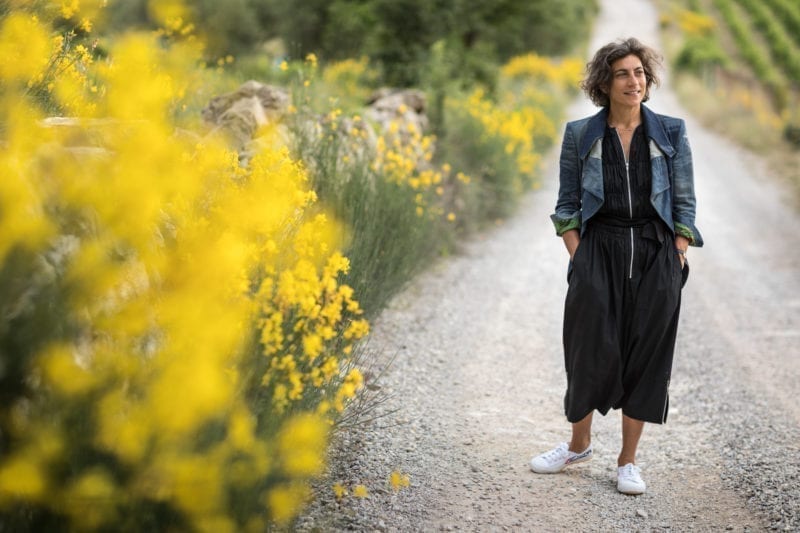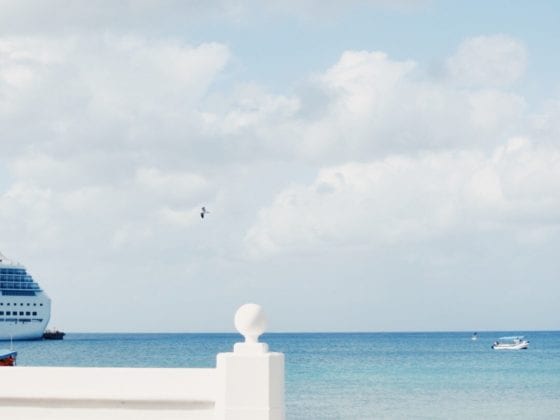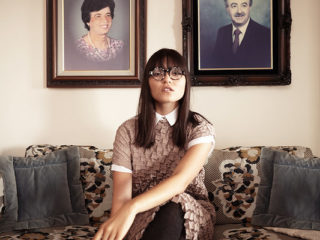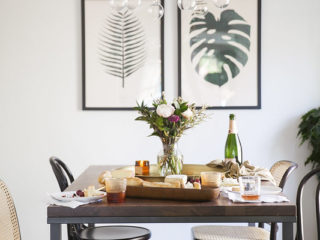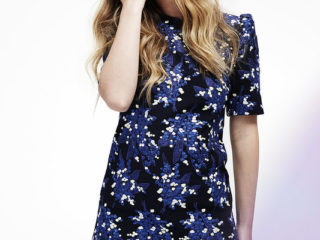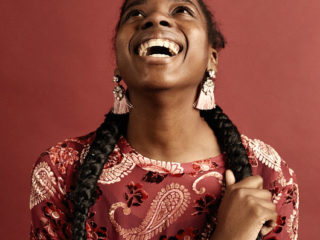“Real Women, Real Work” is a Darling series about everyday women who work in various fields including business, entertainment, science and education. We want to get to know the WHY behind their WHAT and get an inside look into different industries.
For many Italians, “home” is a word rooted in the region where they were born. Lorenza Sebasti, however, is a rare transplant—a Roman who found her true home in Tuscany. In 1976, Sebasti’s family acquired Castello di Ama, a historic estate in the Tuscan countryside. Sebasti immediately felt a deep connection with the land.
“The love I have for it is unlike any other place on this earth,” she explains.
Today, Sebasti is the CEO and Managing Director of Castello di Ama, which has garnered international recognition for excellence in hospitality, winemaking, gastronomy and art, all thanks to Sebasti’s personal style, creativity and ambition. Located in the heart of Chianti Classico—the quintessential Italian landscape, characterized by rolling hills, rows of vineyards and winding roads lined with cypress trees—Castello di Ama is best-known for its wines. Under Sebasti’s direction, however, it has come to be more than just a winery.
With profound attention to detail, Sebasti carefully curates every aspect of the Castello di Ama visitor experience. She has overseen the restoration and decoration of several structures on the property to accommodate overnight guests, as well as the establishment of a restaurant that serves traditional Tuscan dishes to pair with the wine and olive oil that Castello di Ama produces.
Sebasti also founded and facilitates an ongoing collaboration with artists from around the world who create site-specific permanent artworks that are thoughtfully positioned throughout the estate. She has also captured the aromas of the natural landscape of Castello di Ama in a line of custom fragrances.
Darling had a chance to speak with this modern Renaissance woman about Castello di Ama and how it continues to inspire her work.
What does your day-to-day work look like as CEO of Castello di Ama?
I can guarantee that it is never static! I maintain an active role in the estate, whether it’s choosing décor for our five in-house suites, tasting library vintages of our wines or planning travels and sharing news from the estate with our global network of partners. Bringing the wines of Castello di Ama out into the world is a small way of bringing this special place directly to them, which in the end, is my utmost priority.
Bringing the wines of Castello di Ama out into the world…is my utmost priority.
How has your role at Castello di Ama evolved throughout time?
We have always wanted to maintain the special sense of place at Ama. This consistency has provided great stability throughout the years, even when we presented radical projects like introducing contemporary art to our ancient property. The same “fil rouge” runs through everything—a desire to exalt the territory. This desire to maintain a linear approach and consistent philosophy has allowed Ama to evolve over time and expand to reach many audiences, especially through our wines.
My work has evolved in the sense that it continues to reach new horizons. I’m committed to working with export markets, such as the U.S. and Japan, which have great appreciation for the quality of our product and our message.
What sets Castello di Ama apart from other Italian wineries?
We have a consistent style that is recognizable in all assets of what we do—whether it’s the elegance in our wines, the refined glassware and recipes we use at the Ristoro di Villa Pianigiani, our restaurant or the hospitality that greets you upon arrival or at a tasting booth at an international fair. We always respect tradition, but also have a distinct flair that keeps us contemporary.
We always respect tradition, but also have a distinct flair that keeps us contemporary.
What are some of the key principles that guide wine production at Castello di Ama?
Marco Pallanti has been the winemaker at Castello di Ama since 1982. We are extremely fortunate to have maintained a great consistency in the philosophy and style of our wines. Marco is an extremely respected figure in Chianti Classico because of his work as President of the Consortium and his natural skill as an oenologist. He is convinced that Chianti Classico is one of the most prized terroirs in the whole world.
We were the first winery to introduce the single-vineyard cru system to Chianti beginning in 1982. We have always hand-harvested and worked with minimal intervention while maintaining maximum attention, both in the vineyards and the winery. We have always only used estate-grown fruit, which has led to stylistic clarity and impressive verticals throughout the years. Our wines stand the test of time and are consistently rewarded for their quality, which we take great pride in.
Is there a Castello di Ama wine that you would drink every day? Or that you associate with a special memory?
I have a fondness in my heart for each of our wines, but my absolute favorite is our Chianti Classico Gran Selezione San Lorenzo, our “business card,” if you will. This wine gathers fruit from our best vineyards and is a classic example of the special terroir that is hidden in our valleys. Drinking any wine takes me directly to the high hills of Ama—the elegance and acidity brought by our elevated altitude and the intricate use of barrique to exalt and never overpower each vintage.
Describe your creative process for developing the Castello di Ama line of fragrances.
I’m never happier than when I am home at Ama. Each season carries its own special aura, and ever since I was a young child, the smells of this place in each season have resonated with me. I wanted to capture the scent of special days spent working in the countryside.
I wanted to capture the scent of special days spent working in the countryside.
Together with Michele Marin, the master nose and technician behind the fragrances, we crafted a scent to define each season. Working with wine, one becomes very attuned to smells and perfumes. For me, the fragrance project was another way to exalt the special sensory elements of Ama.
When did you first begin inviting artists to create one-of-a-kind art installations at Castello di Ama? Where did you get the inspiration for this project?
We began inviting artists to Ama in 1999, in collaboration with the Galleria Continua in San Gimignano. Our intention for the project was to reconnect the past and future through works of art by artists all over the world in order to express the notion that nature and culture exist in harmonious balance. At Ama, the artist (like the winemaker) is invited to let his or her sensibility be nourished by this special sense of place, to create a work of art (not unlike a bottle of wine) that is unique and impossible to reproduce.
Have you had any personal or professional female mentors that have strongly influenced your career?
I am inspired by many great artists, specifically Louise Bourgeois (a sculptor who developed an art installation at Castello di Ama in 2009.) My encounter with her was extremely important to help me dig more into myself and understand my limits and ambitions versus listening to my soul.
What advice would you give to your younger self?
I’d tell her, “Be softer and be gentle with yourself. Indulge more in the appreciation of nature.” When I moved from Rome to Ama, I knew it was like a sign from an ancient ancestor calling me to live here. Despite each passing year, I didn’t spend as much time as I should have listening to nature’s advice.
Have you ever visited an Italian winery? What did you learn from Lorenza’s story about being the CEO of Castello di Ama?
Image via Alessandro Moggi
